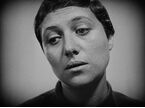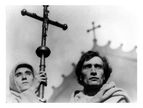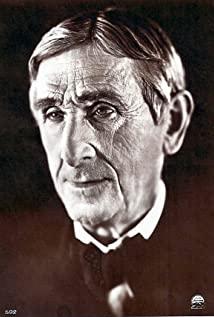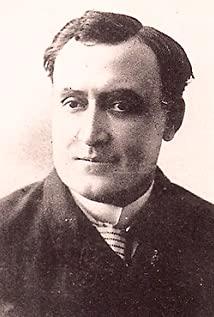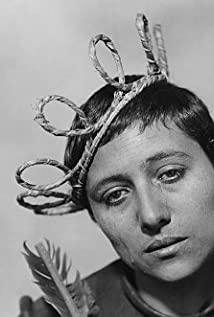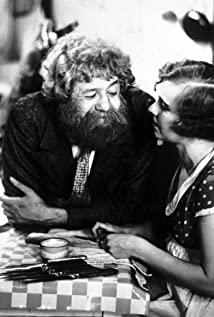Dreyer's "The Dilemma of Joan of Arc" suddenly subverted the relationship between Hollywood's narrative logic and space construction with a tough and weird obscure gesture, and it has also become a wonderful flower that cannot be ignored in the close-up system.
The traditional lens is the basic unit of constructing a film. It has a specific ideographic function, but it is not an ideographic relational unit. However, we cannot understand the relational structure of a film from a picturesque vision. At this time, we We need close-up shots to join our ideographic system. Close-up shots give us a sense of substance within reach of things. The magnification of something we see in a huge picture forces us to focus on things. At the same time, such a powerful force makes us actively associate our cognition and behaviors related to this thing, so the close-up shot has become the most subjective and objective expression. Facial close-ups are more representative of close-ups. We use facial close-ups to emphasize the psychological state of the characters and usually use such close-ups to reveal revelatory reactions that we would not normally perceive. The close-ups serve as a buffer to interrupt The narrative is interrupted, the ideology of the story is interrupted, and the expressions of the characters are focused on.
And "Jan of Arc" is different. It is also a special case of a close-up system. Such extreme performance makes it a unique existence in film history.
The three-dimensional space in "The Dilemma of Joan of Arc" no longer exists. The close-up of the faces of the characters one by one, the tilted composition and fast editing make the film fragmented. Compared with the traditional spatial perspective, we are in about 100 minutes. Observing the static close-up pictures of these characters with great pain, the spatial construction inside the scene is almost completely non-existent. What we see is the plot of each human head in the upper and middle part of the picture. The picture is smoothed out like this, "Space" "This concept is eliminated. We can barely see a few door frames and window frames, which makes us more confused. And the rapid editing has bluntly cancelled the fluidity of the picture. It is difficult for us to feel like "Jan of Arc walked from the court to the From the prison to the execution room to the execution ground,” such a fluid and coherent spatiality, Dreyer eliminates the shadows through the all-white background, strong light and linear perspective, and makes the object appear in a pure white picture or canvas. In, just like the close-up shot, there is a "shape" in the shot, and our traditional perception of space is invalid under the control of Dreyer. The characters in the lens are mostly presented in overhead shots, and they are only half-length. They fill the picture and oppress Joan at an inclination angle. Their images are huge, and their movement is ghostly and unbalanced due to the wide burqa. In the picture, Joan of Arc is always at the corners of the picture. Every aspect can feel that Joan of Arc is oppressed. Even in the process of going to the execution ground, Joan of Arc's whole body does not appear. It is just a frame of the character and is spire. Surrounded by buildings and spears.
It is difficult for us to analyze this film with elements such as depth of field, so the lines have become one of the elements of this film. The arches and the heads of the judges that appear in the film many times become a poetic way of connecting and flowing in our minds. It constitutes the continuity of the picture rather than the continuity in space, and this kind of picture composed of pure geometric lines is everywhere, and there are also the referents of the lines scattered everywhere. The cross represents Joan of Arc, and the execution post represents The judge,
Therefore, the confrontation between Joan of Arc and the Judge is almost everywhere. They are always on the same plane. Such forces put together a picture of the crucifixion of Joan of Arc on the Qingming River. It is not an exaggeration to say that it is an epic picture. All have power and "shape", so the overall film is magnificent and receptive. When we face an epic picture scroll, we will be shocked by the overall picture. The details are equally powerful, which constitutes an "epic" feeling. The same is true for this film. Its vitality is rooted in its incoherence and everything that is incompatible with our traditional film-viewing habits. It has been resisting: resisting coherent narrative, resisting coherent space, resisting balanced composition.
At the same time, the film’s blocking effect on close-ups is also extremely effective. In the torture room, large close-ups of Joan of Arc are continuously inserted to interrupt the use of torture instruments. The static close-up shots are staggered, and the original picture is subverted at the end. The original extreme top-down shot becomes an extreme elevation shot at the end. The camera is close to the ground, and the fanatical crowd and the sky are in full view, and the lens is against the direction of crowd movement. Movement speeds up the movement of the crowd. We can also understand that the film is more of the externalization of Joan's inner world. The abstraction of the inner world is the flatness of the image, the pure white space, the oblique and unbalanced composition, and the emphasis on the lines is quite "expressionist". Characteristic, a small world is displayed distortedly.
We can understand that the presentation of the judges and the masses is the subjective lens of Joan of Arc, and with the continuous changes of Joan’s psychology, the image of the characters in the subjective perspective of Joan is also constantly changing, because it is a psychological change. Disorder follows the completely realistic picture logic, which is more in line with the flatness of the film.
Finally, the film opens a page as the title, trying to explain to the audience: This film is an anti-traditional image of Joan of Arc and requires us to have a high degree of understanding of the history of Joan of Arc's torture. This scene is very symbolic. We turn to this page when we know this history. Dreyer enriches this history and visualizes it. Joan of Arc’s mentality about torture in Dreyer’s heart The journey is fully displayed. The film shows the feelings very intuitively. Through repeated presentations of the trial screen, the dialogue without subtitle card insertion, while the dialogue remains at the level of image performance, it tortures the audience and Joan at the same time. The depiction of the characters intervenes in the story in the form of continuous interruption and fracture.
Everything is about the crucifixion and death of a saint, and it is not just the crucifixion of Joan of Arc, but also extends to the crucifixion of Jesus. The cross symbol and the straw crown are the only two things related to Joan. More purely The theme is clarified, and the babbling of people of all colors forms a huge contrast with Joan’s silence. Silence is often more powerful than words, and the emotional catharsis in images is always more meaningful than lines. In the final picture, the shots of Joan of Arc and the executioner were repeatedly switched while intertwined with the montage of the cross, the bell tower, the stake, and the flock of birds. We believe that Joan has been truly liberated and free. At the same time, it is accompanied by the caption card for Joan of Arc. In summary, this echoes the opening of the book at the beginning: the story is completely over, history has become eternal, and the suffering of Joan of Arc has become immortal.
View more about The Passion of Joan of Arc reviews




